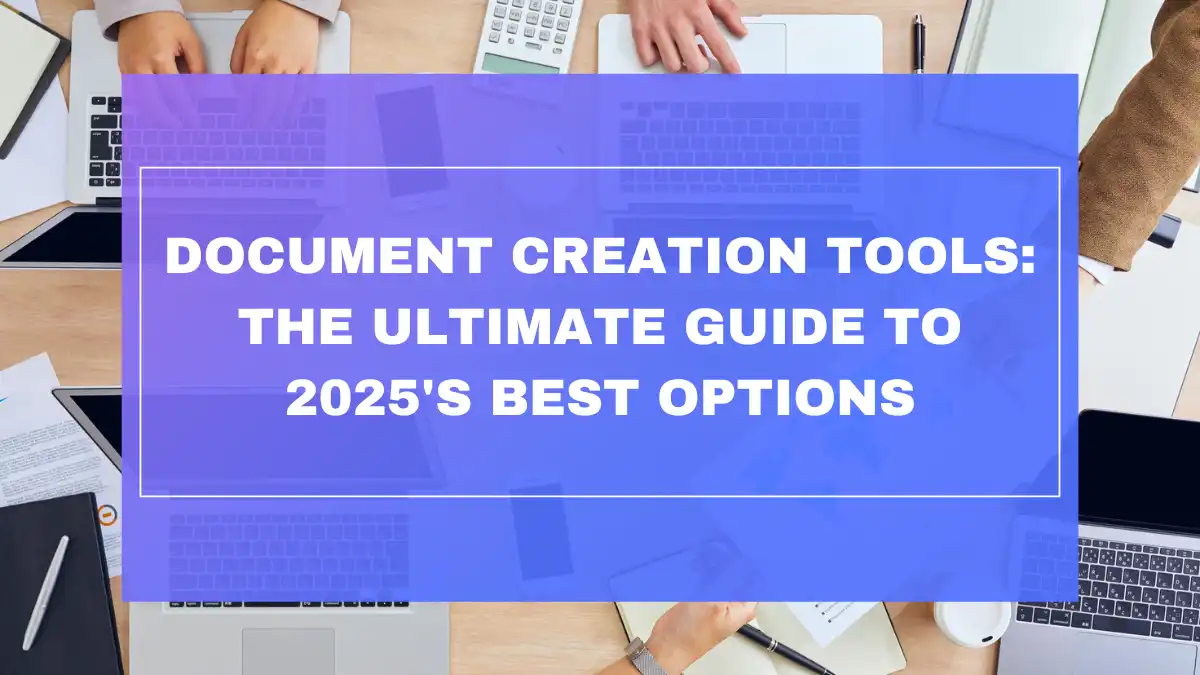Free Online Reading Time Estimator
Know Before You Read
Calculate the estimated reading time for your text. This tool analyzes word count, complexity, and formatting to provide accurate reading time estimates.
Have you ever started reading an article, only to realize halfway through that you don’t have enough time to finish it? Or perhaps you’ve published content online and wondered if your readers might be intimidated by its length without knowing how much time they need to invest. These everyday reading dilemmas can disrupt our information consumption habits and content effectiveness.
That’s where reading time estimators come into play – these handy tools help both readers and content creators set clear expectations about the time commitment needed for any piece of text. Our free online reading time estimator takes the guesswork out of content consumption, allowing you to plan your reading schedule better or optimize your content for maximum engagement.
Introduction to the Importance of Estimating Reading Time
Why Knowing the Read Time of Content Matters
In today’s fast-paced digital world, time is perhaps our most precious resource. When we browse online content, one of the first questions that crosses our minds is: “How long will this take to read?” Having this information upfront helps us make better decisions about whether to dive in now, save it for later, or skip it altogether.
For content creators, displaying estimated reading times has become a best practice that shows respect for your audience’s time. Studies show that articles with visible reading time estimates can increase engagement by up to 40%, as readers appreciate knowing the time commitment before they begin.
Introducing Our Convenient Online Reading Time Estimator
Our free online reading time estimator is designed to give you instant, accurate estimates for any text content. Whether you’re a blogger wanting to inform your readers, a student planning study sessions, or simply someone who wants to manage reading time more effectively, this tool provides the clarity you need with just a few clicks.
Get Accurate Estimates Based on Word Count and Your Reading Speed
What makes our estimator particularly useful is its ability to calculate reading times based not just on standard reading speeds, but on your personal reading pace. By accounting for individual differences in reading speed, our tool delivers personalized time estimates that reflect your unique reading habits.
Key Features of Our Free Online Reading Time Estimator
Customizable Reading Speed: Adjust Words Per Minute (Default: 250 WPM)
Our tool comes pre-set with a default reading speed of 250 words per minute – the average reading pace for most adults reading content online. However, we recognize that reading speeds vary significantly among individuals. That’s why we’ve made it easy to adjust this setting to match your personal reading pace:
- Relaxed Reading: 150-200 WPM
- Average Reading: 250 WPM
- Fast Reading: 300-400 WPM
- Speed Reading: 450+ WPM
Or simply enter your own custom WPM if you know your exact reading speed from previous assessments.
Easy Text Input: Simply Paste Your Content
Using our reading time estimator couldn’t be simpler. There’s no need to upload files or follow complicated processes – just copy and paste your text into the provided input area. The tool works with any text content, from blog posts and articles to essays and reports.
Instant Reading Time Calculation
Once you’ve entered your text, our estimator processes it instantly. With just one click, you’ll see how many minutes and seconds it will take to read the content based on your specified reading speed. No waiting, no complex calculations – just immediate results.
Provides Key Text Statistics: Word Count, Character Count, Sentence Count
Beyond just estimating reading time, our tool offers valuable text statistics that provide additional context about your content:
| Statistic | What It Tells You |
|---|---|
| Word Count | The total number of words in your text |
| Character Count | Total number of characters (with and without spaces) |
| Sentence Count | Number of sentences in your text |
| Average Words Per Sentence | Gives insight into sentence complexity |
| Paragraphs | Total number of paragraphs in your text |
These metrics help you better understand the structure and complexity of the content you’re working with.
User-Friendly Interface for Quick Estimates
We’ve designed our tool with simplicity in mind. The clean, intuitive interface requires no technical knowledge or training to use effectively. Whether you’re tech-savvy or not, you’ll find our reading time estimator straightforward and hassle-free.
How to Use Our Free Online Reading Time Estimator: A Simple Guide
Step 1: Select Your Estimated Reading Speed
Begin by choosing the reading speed that best matches your pace. You can select from our preset options (Relaxed, Average, Fast, Speed Reader) or enter a custom WPM value if you know your specific reading speed.
🔍 Pro Tip: If you’re unsure about your reading speed, start with the default 250 WPM and adjust based on your experience.
Step 2: Paste Your Text into the Provided Input Area
Copy the text you want to analyze and paste it into the text box on our tool. The estimator accepts text of any length, from short paragraphs to lengthy articles.
Step 3: Click the “Estimate Reading Time” Button
Once your text is in place and you’ve set your reading speed, simply click the “Estimate Reading Time” button to process your content.
Step 4: Instantly View the Estimated Reading Time for Your Text
The tool will immediately display how long it will take to read the text based on your chosen reading speed. This estimate is typically shown in minutes and seconds (e.g., “3 minutes 42 seconds”).
Step 5: See the Accompanying Text Statistics for More Context
Along with the reading time estimate, you’ll see a breakdown of key statistics about your text. These metrics provide additional insights into your content’s structure and help you understand factors that might influence the actual reading experience.
The Benefits of Using a Reading Time Estimator
Plan Your Reading Schedule Effectively
With accurate reading time estimates, you can better plan when and where to consume content. Have a 15-minute break coming up? Our tool can help you identify articles that fit perfectly within that timeframe, maximizing your efficiency.
Understand the Time Commitment Required for Content Consumption
Whether you’re diving into a research paper, blog post, or book chapter, knowing the time commitment upfront helps you decide if now is the right moment to engage with that content. This prevents the frustration of starting something you don’t have time to finish.
Optimize Your Own Content for Reader Engagement
For content creators, understanding how long your pieces take to read is crucial for optimization. Research indicates that the sweet spot for most online content is between 7-12 minutes of reading time. Our tool helps you hit that target by showing whether your content needs trimming or expansion.
Provide Readers with Clear Expectations About Content Length
Adding estimated reading times to your content sets clear expectations for your audience. This small addition to your articles can significantly improve user experience by helping readers make informed decisions about engaging with your content.
Useful for Bloggers, Students, Educators, and Content Creators
Our reading time estimator serves diverse needs:
- Bloggers: Optimize content length and improve user experience
- Students: Plan study sessions and manage reading assignments
- Educators: Set appropriate reading loads for students
- Content Marketers: Create content with ideal length for target platforms
- Researchers: Manage time when reviewing literature
- Casual Readers: Better plan leisure reading time
Understanding Reading Speed and Its Impact on Estimates
Factors That Influence Individual Reading Speed
Reading speed varies widely based on several factors:
- Reading Skill Level: More practiced readers generally read faster
- Content Familiarity: Prior knowledge of the subject matter speeds up reading
- Text Complexity: Technical or complex content takes longer to process
- Language Proficiency: Reading in your native language is typically faster
- Purpose: Skimming for general ideas is faster than reading for deep comprehension
- Format: Digital vs. print can impact reading speed
- Distractions: Environmental factors affect concentration and speed
Understanding these influences helps you choose the most appropriate reading speed setting when using our estimator.
Typical Reading Speeds for Different Contexts
Reading speeds typically vary based on the content type and reading purpose:
| Content Type | Typical Reading Speed |
|---|---|
| Casual online browsing | 200-250 WPM |
| In-depth online articles | 150-200 WPM |
| Textbooks/Technical material | 100-150 WPM |
| Novels/Narrative content | 250-300 WPM |
| Speed reading (trained) | 400-700 WPM |
How Our Tool Allows You to Personalize Your Estimate
Our reading time estimator isn’t one-size-fits-all. By allowing you to adjust the WPM setting, we ensure that your estimates reflect your personal reading reality. This customization makes our tool useful for everyone from slow, methodical readers to trained speed readers.
Why Text Statistics Enhance the Reading Time Estimate
Word Count as the Primary Factor in Calculation
While reading time is primarily calculated based on word count divided by reading speed, understanding the total word count of a text gives you valuable context about its scope and depth.
Character Count and Sentence Count Provide Additional Context
These metrics offer insights into the text’s complexity:
- High character-to-word ratio: Indicates longer, potentially more complex words
- Sentence count and length: Longer sentences typically require more cognitive processing
Understanding the Overall Length and Complexity of the Text
The combination of all text statistics helps you gauge not just how long a piece will take to read but also how demanding that reading might be cognitively. This comprehensive view helps set more accurate expectations about both time investment and mental effort.
Practical Applications of Our Online Reading Time Estimator
For Bloggers and Website Owners: Setting Reader Expectations and Improving UX
Adding reading time estimates to your blog posts is a simple way to enhance user experience. According to a Medium research study, posts that display reading times have 20% higher completion rates than those without.
Implementation is easy – just run your content through our estimator and add the time estimate at the beginning of your post. This small addition makes your content more user-friendly and demonstrates respect for your readers’ time.
For Students: Planning Study Time for Assignments and Research
Students juggling multiple reading assignments can use our estimator to allocate study time effectively. By estimating how long each reading will take, you can create realistic study schedules that prevent last-minute cramming and reduce academic stress.
For Educators: Estimating Time Needed for Assigned Readings
Teachers and professors can ensure fair reading loads by using our tool to validate that assigned readings fit within reasonable time expectations. This helps create more balanced curricula and improves student engagement with course materials.
For Content Marketers: Optimizing Content Length for Different Platforms
Different platforms have different ideal content lengths:
- LinkedIn articles: 7-9 minute reads perform best
- Medium posts: 5-7 minute reads get the most engagement
- Blog posts: 7-10 minute reads balance depth and readability
Our estimator helps you tailor content length to platform expectations, maximizing engagement and effectiveness.
For Anyone Sharing or Consuming Text Online
Whether you’re sending an important email, sharing a document with colleagues, or deciding which news articles to read during your lunch break, our reading time estimator helps you make better decisions about text content.
Conclusion: Make the Most of Your Time with Our Free Online Reading Time Estimator
Recap of the Benefits of Estimating Reading Time
In our information-saturated world, knowing how long content will take to consume is increasingly valuable. Our reading time estimator offers:
- Personalized time estimates based on your reading speed
- Comprehensive text statistics for deeper content understanding
- Simple, user-friendly interface requiring no technical knowledge
- Practical applications for diverse users including students, educators, bloggers, and casual readers
By incorporating reading time estimation into your content consumption and creation habits, you’ll make more informed decisions about how to invest your limited reading time.
Start Calculating Read Times for Your Text Today!
Ready to gain better control over your reading schedule or improve your content’s user experience? Our free online reading time estimator is available now, with no registration or download required. Simply visit our website, paste your text, and get instant reading time estimates tailored to your needs.
Take the guesswork out of content consumption and start making more informed reading decisions today!
FAQ: Frequently Asked Questions About Reading Time Estimation
How accurate is your Reading Time Estimator?
Our estimator provides a reliable approximation based on word count and reading speed. However, actual reading times may vary depending on content complexity, reader familiarity with the subject matter, and individual reading patterns. For most general content, our estimates fall within a 10-15% margin of actual reading times.
What is the default reading speed used by the tool?
We use 250 words per minute as our default setting, which represents the average reading speed for adults reading content online. This speed assumes normal comprehension of moderately complex material.
Can I adjust the reading speed to my own pace?
Absolutely! Our tool allows you to set a custom reading speed by either selecting from preset options (Relaxed, Average, Fast, Speed Reader) or entering your specific WPM value manually.
Does the tool consider images or other media in the estimation?
Our estimator focuses exclusively on text content. Images, videos, infographics, and other media elements will add to the actual time spent engaging with the content. If your content contains significant non-text elements, you might want to add some additional time to our estimate.
How does word count relate to reading time?
Reading time is primarily calculated by dividing the total word count by the reading speed (in words per minute). For example, a 1,000-word article read at 250 WPM would take approximately 4 minutes to read (1000 ÷ 250 = 4).
Why are text statistics provided along with the reading time?
The additional text statistics (character count, sentence count, etc.) provide context about content structure and complexity. These metrics help you understand not just how long a piece will take to read but also offer insights into its complexity and readability.
Is there a limit to the length of text I can analyze?
Our tool can handle texts of virtually any length, from short paragraphs to lengthy articles and reports. However, for extremely long documents (50,000+ words), you might experience slightly longer processing times.
Can I use this tool on my mobile device?
Yes! Our reading time estimator is fully responsive and works seamlessly on smartphones, tablets, and desktop computers. The interface adapts to your screen size for optimal usability on any device.
Is this tool really free to use?
Yes, our basic reading time estimator is completely free to use with no hidden costs or limitations. We also offer a premium version with additional features like readability analysis, keyword density checking, and bulk processing for professional content creators.
Are there any other factors that can affect reading time?
Several factors can influence actual reading times beyond word count:
- Text complexity and vocabulary level
- Content formatting and structure
- Reader’s familiarity with the subject matter
- Distractions in the reading environment
- The reader’s purpose (skimming vs. deep reading)
Our estimator provides a solid baseline, but these factors might cause variations in actual reading experiences.






